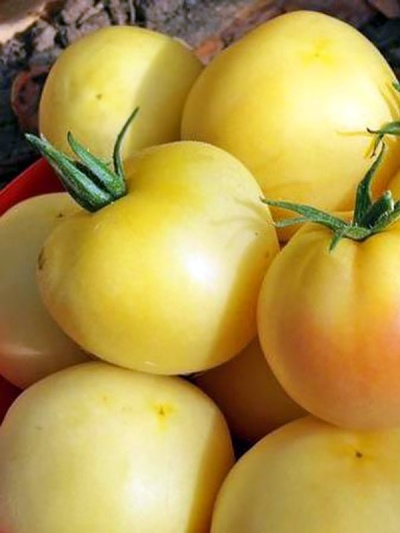
- Authors: Gavrish S.F., Morev V.V., Amcheslavskaya E.V., Volok O.A., Nazina S.L.
- Year of approval: 2006
- Category: grade
- Growth type: indeterminate
- Appointment: fresh consumption, for pickling and preserving
- Ripening period: late ripening
- Ripening time, days: 123-126
- Growing conditions: for film greenhouses
- Bush height, cm: 160-180
- Leaves: large, dark green
The name of the tomato Giraffe is extremely unusual. But it is necessary to carefully study all its features and nuances in order to get a good result. Only in this case, a representative of the Russian selection will delight farmers with their fruits without any problems.
Breeding history
A whole group of breeders led the work on the Giraffe project. Among them are such well-known names as Gavrish, Amcheslavskaya, Morev. They were also joined by Volok and Nazina. The official admission for cultivation was given in 2006.
Description of the variety
The giraffe is a simple, indeterminate variety. The plant is suitable for film greenhouses. The bushes reach a height of 1.6-1.8 m. Dark green large foliage is typical for them.
The main qualities of the fruit
Giraffe berries at the beginning of their development have a light green color. As they develop, they turn yellow. The mass of a single specimen is 85-92 g. The round fruit is covered with a smooth skin. It will develop on a simple inflorescence.
Taste characteristics
They are evaluated controversially. Some farmers mention that this variety tastes good. In other reviews, they note a very nasty feeling. It can be assumed that in some cases the problems may be associated with an outright forgery. The pulp will be quite firm.
Ripening and fruiting
The ripeness of the crop is usually reached 123-126 days after the formation of the green growth. Therefore, the plant is classified as a late-ripening group. For the harvest, excellent keeping quality is typical.
Yield
The fertility of the Giraffe ranges from 8.3 to 9.2 kg per 1 m2. Of course, such a result can be achieved only with impeccable agricultural technology.
The timing of planting seedlings and planting in the ground
It is necessary to sow seeds in containers in the second half of March. If the weather is favorable, then in the middle, and if not, then at the end of the month. Usually, the time to transplant seedlings into open ground comes in the first half of May. It is assessed individually, taking into account the readiness of the seedlings themselves. And also it is necessary to pay attention to the degree of warming up of the earth.

Growing tomato seedlings is an extremely important process, because it largely depends on whether the gardener will be able to harvest at all. All aspects must be taken into account, from seedbed preparation to planting in the ground.
Landing scheme
Recommended placement according to the rule of 400x600 mm. It is advisable to form plants in 1 stem.

Growing and care
In the southern regions of the Russian Federation, the giraffe can be grown outdoors. To the north, greenhouses should be used for it. You will definitely have to pinch the top and remove the side shoots. It is necessary to water the bushes and apply fertilizers every 10-12 days. For planting, it is recommended to choose areas with light soil, characterized by increased fertility.
It is not necessary to use phytolamps for greenhouse cultivation. The soil must be disinfected 14 days before planting seedlings. The bushes should be watered using 2 liters of water. This is best done in the evening. Important: according to the indications of some sources, the Giraffe needs pollination by bees.




A plant needs different micronutrients at each stage of growth. All fertilizers can be divided into two groups: mineral and organic. Folk remedies are often used: iodine, yeast, bird droppings, eggshells.
It is important to observe the rate and period of feeding. This also applies to folk remedies and organic fertilizers.
Disease and pest resistance
The variety can survive contact with:
cladosporiosis;
tobacco mosaic virus;
fusarium wilting.
But the high immunity to viral diseases should not be overestimated. The danger can be late blight. It is worthwhile to properly process the bushes. The pests are the same as in other varieties of tomatoes. But subject to the rules of agricultural technology, the threat from them will be minimal.


Growing regions
Giraffe bushes can be grown in:
Western Siberia;
any area of the Moscow region;
central Black Earth region;
north-western regions and the center of the European part of Russia;
Arkhangelsk region;
Karelia;
Krasnodar Territory;
Stavropol Territory;
republics of the North Caucasus;
Volgo-Vyatka region;
Middle Volga region.
Review overview
Giraffe fruits are extremely pleasant and are liked by the vast majority of people. You can store the crop for a long time. Growing in a greenhouse is easy. The fruits look beautiful. However, their taste is sometimes disappointing.

























































































